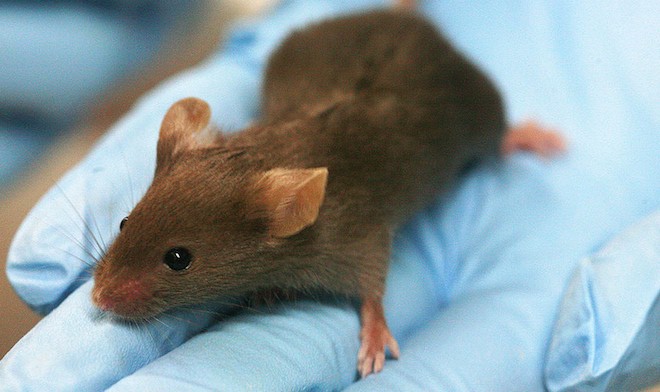
 Rama (CC), Flickr
Rama (CC), Flickr
The farm practice that underlies most agricultural use of antibiotics is known as “growth promotion”: It calls for giving very small doses of antibiotics routinely to meat animals because those doses cause them to gain fat and muscle more quickly than they would otherwise. Growth promotion dates back to the early days of the antibiotic era, and has always been somewhat mysterious. Though there were attempts to pick apart its mechanisms in the 1950s and 1960s (I’ve been reading some fascinating old accounts), for the most part, people simply accepted that it worked. It’s only in the past decade or so, as interest has increased in the microbes that reside everywhere in our and animals’ bodies (a vast community generally known as the microbiome), that researchers have begun trying to dissect what is going on.
The scientific team that has probably pursued this most intensely is the NYU Langone Medical Center lab led by Martin J. Blaser. Blaser published a popular account of their research into antibiotics’ effect on obesity, asthma, diabetes, and other disorders in Missing Microbes: How the Overuse of Antibiotics Is Fueling Our Modern Plagues, published in April. (Disclosure: I reviewed the book for Nature.) Two years ago, the team showed that giving small doses of antibiotics to very young mice affected genes controlling metabolism of nutrients, and caused the mice to gain weight. Now they have followed up that research with detailed work exploring how much the timing and length of antibiotics affects weight gain. Though the work is still in mice, it leads to provocative conclusions about how growth promoters work in livestock, and what early-life antibiotics might do to humans as well.
In the new study, published last week, Blaser’s colleague Laura Cox and additional researchers from both NYU and other institutions gave both long and short-term regimens of low doses of penicillin to mouse pups and also to mouse mothers before they gave birth. In all cases, the mice that received the low-dose penicillin, or their offspring, grew up to be heavier than undrugged mice. In the mice that received the low doses continuously, the balance of microbes in their guts was permanently altered. In the ones that received the short regimens, their microbiomes returned to normal after the drug doses ceased — but they continued to gain weight faster than they should have. And finally, when mice that had not been dosed received transplants of gut bacteria from dosed mice, they gained weight abnormally as well, even though they had not received any antibiotics themselves.
Granted that mice are not cattle, pigs, chickens or other meat animals, this is still illuminating of what may be going on when growth promoters are administered. (Something that, even today, is dismissed with “it just works” hand-waving.) It also sheds light on what may happen in humans when young children receive antibiotics. Children don’t get antibiotics as a routine thing the way livestock do, but they do very commonly receive short courses for common childhood infections such as ear infections. It’s possible, as Blaser has suggested elsewhere, that those early-life prescriptions may be an unacknowledged cause of the worldwide rise in obesity.
In the paper, Blaser’s team is careful to call this work a model; and, again, the work is only conducted in mice. But to me the results provide one more clause in the long argument of why antibiotic overuse — which we know contributes to antibiotic resistance, and may contribute to obesity — should be scaled back.
Note: I am a few days late in writing about this because I was traveling. Faster and more thorough responses appeared at The Scientist and the Genetic Literacy Project, and Ed Yong’s take at Phenomena is especially good.
Cite: Cox, Laura M. et al. Altering the Intestinal Microbiota during a Critical Developmental Window Has Lasting Metabolic Consequences. Cell , Volume 158 , Issue 4 , 705 – 721. DOI: http://dx.doi.org/10.1016/j.cell.2014.05.052